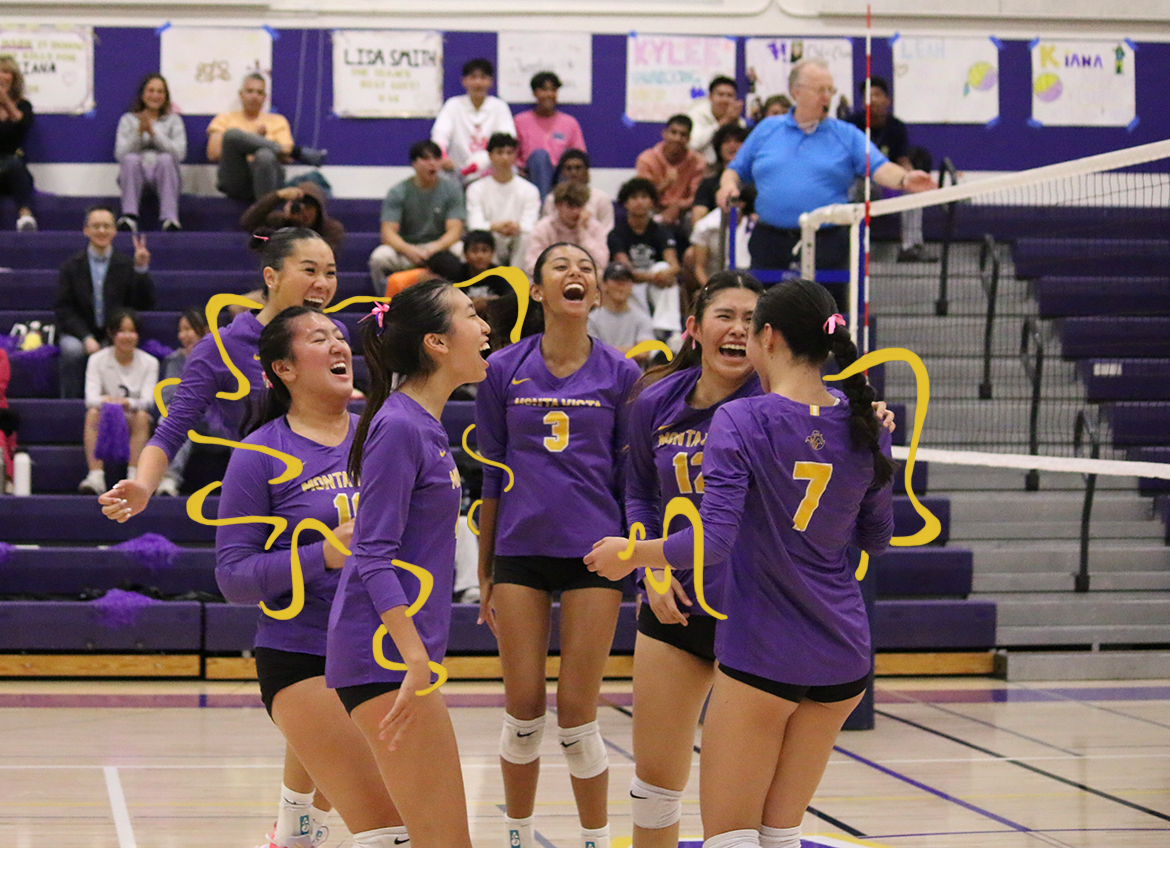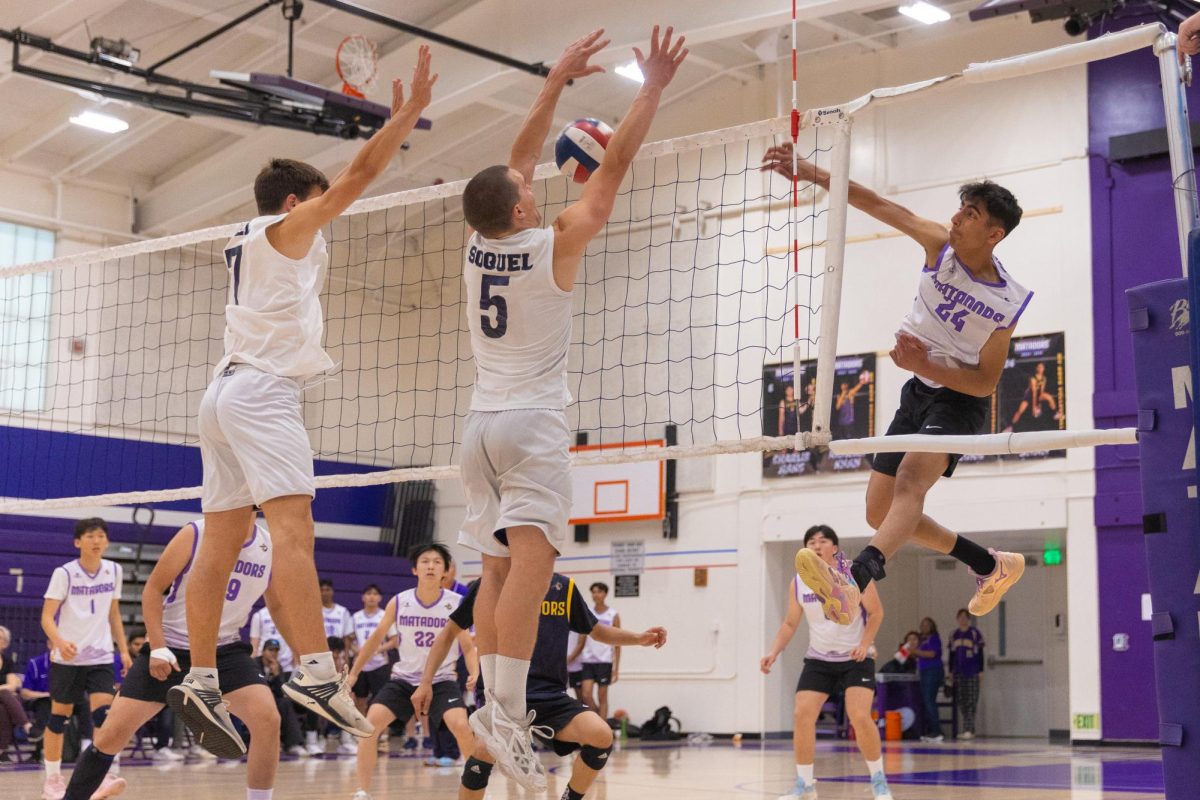Senior Ashley Yang recalls meeting one of her close friends, junior Jocelyn Zou, at a volleyball clinic her sophomore year where the two played for Panda Volleyball Club. Upon discovering that they both went to MVHS, they connected further through open gyms — off-season practices after school. Yang notes that being on a sports team makes it easy to find others to connect with, especially as members of the volleyball team not only have a common interest, but have similar routines that allow them to connect.
“We do a lot of reps by position in which we all practice in the same way,” Yang said. “Instead of other sports, where you might focus on your individual training, I feel like in volleyball you focus on training as a team, and run drills as a team. It’s really easy to make friends because you spend a lot of time with the team.”
Forming friendships among teammates can have benefits that extend beyond practices and competitions, according to Flag Football and Track and Field Head Coach David Sciplin, which is why he emphasizes creating a positive environment among his teams through athlete leadership. By allowing flag football players to design plays and athletes to select team captains in track and field, Sciplin hopes that players engage more with the team. Compared to the relationship between an athlete and their coach, which Sciplin describes as more “authoritarian,” he finds that peer leadership can be more welcoming, especially to new athletes.
“Having friends within the team helps them at practice because if you have people at different skill levels, they can help people who aren’t as skilled become better athletes,” Sciplin said. “As far as helping them in life, high school is where you meet your most lifelong friends, and is the only opportunity that many people will get to play a sport at a high level. That builds confidence that they can achieve what they want, which builds lifelong friendships and relationships.”
Sophomore Allie Rummelhoff, who plays flag football, basketball and track and field, notes that a shared routine during practices can help facilitate relationships among teammates. Despite sometimes engaging in friendly competition during practice, Rummelhoff notes that learning in tandem with teammates and getting through hard workouts together helps build connections among the throws team, who compete in shot put and discus.
“I’d say the throws team is two or three groups separated by grade level,” Rummelhoff said. “Last season, after meets, especially weekend invitationals, we would all go hang out and get dinner after. The freshman group — the Class of 2027 — was all pretty close.”
Sports also allowed Rummelhoff to meet her partner, sophomore Edward Fan. The two met at a basketball game and grew closer throughout their freshman track season. Rummelhoff notes that having similar routines made it easier for them to spend time together.
“We do the same events, so we’re with each other a lot,” Rummelhoff siaid. “We’re on the same schedule because we have similar classes and we end at the same time. So we do drills and the same workout set, and we go to the weight room after practice together. I feel like after warmups, you’re completely focused on your sport. We’re both pretty competitive and don’t get distracted easily because we want to do good in the sport.”
Both Rummelhoff and Fan note that competition is prevalent among the throwing team: track and field’s individualistic nature can sometimes foster tension among athletes. Rummelhoff notes that conflict often arose when deciding which individuals should compete on the varsity team, as coaches often had a hard time making the decision between underclassmen who were throwing farther and seniors who wanted to compete on varsity for their last season.
 “It’s a team sport and you want your teammates to do well because it adds points to the board,” Rummelhoff said. “But there’s also the individual aspect where you want to be the best. I feel like it depends on how close you are — if you’re not as close, I’ve seen people with obvious tension between them. But for other people, there’s tension for a second and then they’re just proud of each other.”
“It’s a team sport and you want your teammates to do well because it adds points to the board,” Rummelhoff said. “But there’s also the individual aspect where you want to be the best. I feel like it depends on how close you are — if you’re not as close, I’ve seen people with obvious tension between them. But for other people, there’s tension for a second and then they’re just proud of each other.”
Sciplin, has also seen competition among athletes to be on the Varsity team, and explains that players’ work ethics during practice plays a large part in his decision to include them on the starting roster. To curb any tension that may arise as a result of his decision, he tries to shift his players’ perspectives by helping them understand his decision-making process.
“They have to understand who makes the decision,” Sciplin said. “What I tell people is yes, I want your input. Yes, I want to hear what you have to say, but this is not a democracy. The issue that you’re having with the person next to you is not between you two — that person is not making the decision and the coach is making the decision. So there’s no reason for you to be mad at them because they’re not making the decision about what’s going on with the team.”
Yang, who has experienced competition among her teammates for starting sports early in the season, explains that one way she coped with the tension was by reframing it as a way to grow and reminding herself that it was her responsibility to support her team regardless of whether she received a starting or bench position. Furthermore, Fan and Rummelhoff both remind themselves that interactions with their teammates help them grow — Fan notes when the throws team unites, they can all help each other out with the technical aspects of throwing.
“It’s really cool, competing with my friends, who are the boys in shot put and discus,” Fan said. “It was more competitive, because we want to beat each other, but at the same time we’re also learning and trying to teach each other how to do it correctly. But when everyone comes together as a group, across both genders, it’s less competitive and more about teaching each other how to do something.”
Despite competition among teammates, Sciplin notes that sports help relieve stress from MVHS’ highly competitive atmosphere. By allowing athletes to find like-minded teammates who help push and support each other, sports ultimately help bring athletes closer despite the competition they might spark.
“Sports is where you go to not worry about school,” Sciplin said. “Having people that are like-minded, that are competitive in school and on the field or on the track, that’s what builds the bonds. Sports is an opportunity to find people that think the same way because everybody on the team is interested in that sport. So if you have someone next to you, especially in an event that you love, that’s the person that can push you to become a better athlete.”










